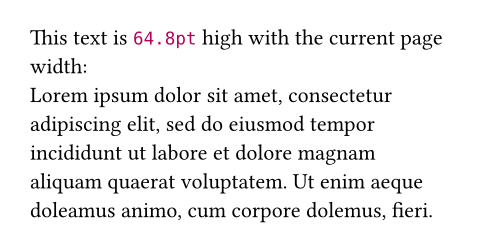layout
Provides access to the current outer container's (or page's, if none) size (width and height).
The given function must accept a single parameter, size, which is a dictionary with keys width and height, both of type length.
#let text = lorem(30)
#layout(size => [
#let (height,) = measure(
block(width: size.width, text),
)
This text is #height high with
the current page width: \
#text
])

If the layout call is placed inside of a box width a width of 800pt and a height of 400pt, then the specified function will be given the parameter (width: 800pt, height: 400pt). If it placed directly into the page it receives the page's dimensions minus its margins. This is mostly useful in combination with measurement.
You can also use this function to resolve ratio to fixed lengths. This might come in handy if you're building your own layout abstractions.
#layout(size => {
let half = 50% * size.width
[Half a page is #half wide.]
})

Note that this function will provide an infinite width or height if one of the page width or height is auto, respectively.
Parameters
func
A function to call with the outer container's size. Its return value is displayed in the document.
The container's size is given as a dictionary with the keys width and height.
This function is called once for each time the content returned by layout appears in the document. That makes it possible to generate content that depends on the size of the container it is inside of.